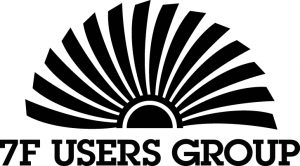 The 7F Steering Committee invigorated last Wednesday’s (Day 7, July 1) program by leading off with a discussion session on rotors rather than a user presentation on the subject, as had been the norm for the other days of the event. The format was simple: A committee member and special user guest greased the skids, so to speak, on the subject of rotor maintenance, and attendees provided a seemingly endless string of questions and experiences. In fact, the discussion leaders had to hit the session trip button so the next speaker, Doosan Turbomachinery Services’ VP Engineering Glenn Turner, could make his presentation.
The 7F Steering Committee invigorated last Wednesday’s (Day 7, July 1) program by leading off with a discussion session on rotors rather than a user presentation on the subject, as had been the norm for the other days of the event. The format was simple: A committee member and special user guest greased the skids, so to speak, on the subject of rotor maintenance, and attendees provided a seemingly endless string of questions and experiences. In fact, the discussion leaders had to hit the session trip button so the next speaker, Doosan Turbomachinery Services’ VP Engineering Glenn Turner, could make his presentation.
The two discussion leaders combined have fleet-level maintenance responsibility for more than five dozen 7FAs. They began with a brief introduction of the OEM guidance documents of greatest importance to anyone involved in the rotor-maintenance process—read end-of-life (EOL) inspections and life-extension work. They are GER-3620, “Heavy-Duty Gas Turbine Operating and Maintenance Considerations” and Technical Information Letter 1576-R1, “Gas Turbine Rotor Inspections.”
TIL 1576-R1 refers you to GER-3620 for overall guidance on all centerline maintenance. The latter is now at Rev N (November 2017) which is important for you to have. Don’t have a copy? A simple Google search can provide access. Or, a copy of the presentation may also be helpful and can be accessed on the secure, user-only website of powerusrs.org.
Rotor life limits for the 7FA are 144,000 factored hours or 5000 factored starts, depending on whether your machine is starts- or hours-based. The pages in Rev N of interest to this discussion are 30 to 35, with Fig 45 being particularly important. Reason is that the impact of forced-cooling on rotor inspection calculations is now a consideration, replacing the “trip from load factor” in earlier versions of the GR-3620 document.
Attendees were polled on how they operate their units. More than half (52%) said their machines were hours-based, 16% starts-based. For users with multiple units, 27% said they had a mix of hours- and starts-based machines. Interestingly, only 5% of the attendees said their units had switched from starts-based to hours-based, or vice versa.
Calculation of factored starts can be challenging. There was considerable discussion of what to include in your determination. One of the session leaders illustrated how he calculated the rotor maintenance factor for one unit, which was 1.4 multiplied by actual starts.
The other discussion leader said this was fine, provided the entire rotor has been together for its entire life. If not, track the operating histories of individual components—such as the compressor and turbine if they have been decoupled. This approach likely benefits the owner. GE, it was said, considers the rotor one component.
Other points also were made to illustrate the complexity of factored-hours/starts calculations (particularly the latter). Attendees were urged to do make their calculations as accurate as possible to avoid leaving “life” in the rotor before removing it for an EOL inspection. How would you factor the following into your calculations?
-
- Control system changes.
- Staff changes.
- Ownership changes.
- Upgrades—such as going from 24k hours to 32k on a Dot 04 upgrade.
An idea for extending rotor lifetime surfaced: Shift your high-hours machine to a starts-based unit. No guidance was offered, however.
It might appear that calculation of the maintenance factor might be a task assigned to the DCS. But that’s not true. A poll showed only 14% of the attendees used the DCS to calculate maintenance factor; 37% said “No” outright. Another 16% said they weren’t sure; double that number track maintenance factor outside of the DCS.
Safety drives rotor EOL inspections. The experts say gas-turbine casings are not designed to withstand a rotor wheel burst, so if that were to happen personnel could be hurt, possibly killed. Rotor disassembly and inspection can mitigate this risk by identifying wheels that should be replaced. The failure of other components, it is said, would cost money and time but likely would not be life-threatening. Cyclic operation is of particular concern because it induces thermal transients and mechanical stresses on the rotor.
Attendees were asked if they were planning on 7F rotor maintenance in the next five years. “Yes,” based on GER-3620 guidance, was checked by 57% of the users participating; “No,” 29%. The remaining 14% said they had to learn more before deciding.
A few takeaways from the conversation included the following:
-
- Experience from units hitting the 5000-starts limit: Turbine sections typically are in “pretty rough condition.”
- The aft end of the compressor gets most wear and tear on cycling units. Think about replacing the 17th and 16th stage wheels at EOL, perhaps even one or more earlier rows. Suggestion was to have a qualified company help you determine if this is a good idea.
- Expect to replace the first-stage turbine wheel on most starts-based units.
- Poll: Have you performed a rotor lifetime assessment? “Yes,” 22%; “No,” 78%.
- One of the nation’s largest utilities reportedly has not yet hit EOL on an hours-based unit.
- Poll: What are you planning for? Exchange rotor, 29%; lifetime extension, 32%; new rotor, 12%; undecided/do not know, 27%.

